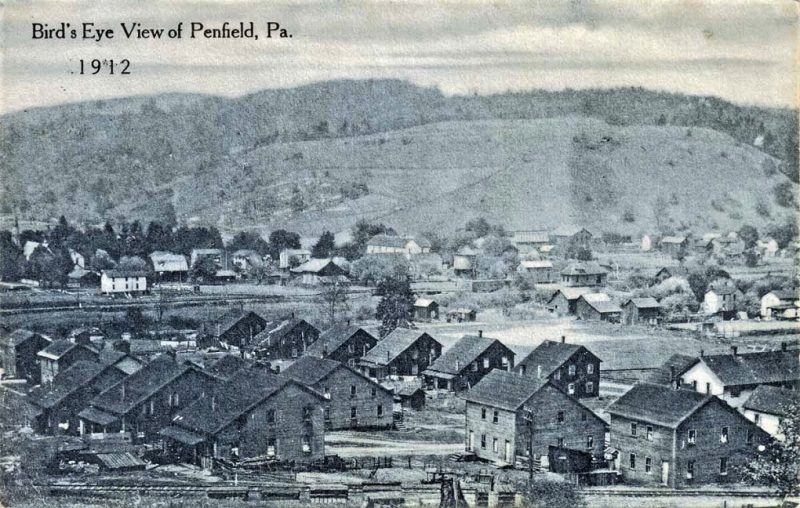Penfield, which encompasses the intersection of Routes 153 and 255, in Huston Township, is an older village than one might think.
The driving duo of lumber and coal gave rise to the locale’s economy is the late 19th and early 20th century, but the town was settled or founded by a man named Gould Hoyt in 1839.
Mr. Hoyt was the son so Catherine Hoyt, a Vermont native and a Revolutionary War nurse and veteran who lived from 1758 to 1845.
Her short obituary listed her as a “mother of the revolution.” She is buried in an unmarked gravesite just north of the intersection. A historical marker notes the approximate spot.
As is told, Gould Hoyt had neat penmanship and the Penfield was named for his talent.
John DuBois, the 19th century lumber baron, whose namesake is given to DuBois itself, expanded his logging operations and railroads throughout the Bennetts Valley, essentially connecting DuBois to St. Marys.
DuBois was the catalyst whose ever-expanding resource extraction interests made the Penfield area rapidly grow.
Markets needed laborers and immigrants, at this time, served the purpose. Many single men, and later their families, arrived from poorer regions of southern Italy as well as Eastern and other European regions and spiked the population growth of Penfield and the surrounding communities.
Many of their names and family traditions still thrive in Penfield today. One ingrained tradition was the willingness to work hard to get ahead.
Tanneries, that processed hides into leather, often became a spin-off industry of the lumber business. Tree bark and an abundant supply of coal were two essential products that kept tanneries in business.
The 1912 photo shows Elk Tannery company houses in Penfield. They were simple wooden structures, simply built, to provide double-family occupancy.
Large families were often crammed into these units. Rent was often deducted from worker’s wages. The abuse of that system, as well as company store policies, was often a source of labor strife at the time.
The photo shows the surrounding hills, sets of railway tracks, dirt streets and a locomotive watering tank.
The company house design resembles that of the somewhat more picturesque New England “salt box” style, but the working families of Penfield, then, saw them basic shelter as they hoped for a better future.
